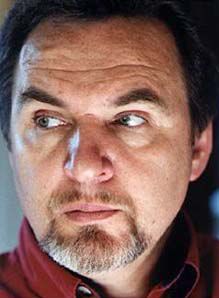© 2005 All Rights Reserved. Do not distribute or repurpose this work without written permission from the copyright holder(s).
Printed from https://danginteresting.com/the-phantom-time-hypothesis/

When Dr. Hans-Ulrich Niemitz introduces his paper on the “phantom time hypothesis,” he kindly asks his readers to be patient, benevolent, and open to radically new ideas, because his claims are highly unconventional. This is because his paper is suggesting three difficult-to-believe propositions: 1) Hundreds of years ago, our calendar was polluted with 297 years which never occurred; 2) this is not the year 2005, but rather 1708; and 3) The purveyors of this hypothesis are not crackpots.
The Phantom Time Hypothesis suggests that the early Middle Ages (614-911 A.D.) never happened, but were added to the calendar long ago either by accident, by misinterpretation of documents, or by deliberate falsification by calendar conspirators. This would mean that all artifacts ascribed to those three centuries belong to other periods, and that all events thought to have occurred during that same period occurred at other times, or are outright fabrications. For instance, a man named Heribert Illig (pictured), one of the leading proponents of the theory, believes that Charlemagne was a fictional character. But what evidence is this outlandish theory based upon?
It seems that historians are plagued by a plethora of falsified documents from the Middle Ages, and such was the subject of an archaeological conference in München, Germany in 1986. In his lecture there, Horst Fuhrmann, president of the Monumenta Germaniae Historica, described how some documents forged by the Roman Catholic Church during the Middle Ages were created hundreds of years before their “great moments” arrived, after which they were embraced by medieval society. This implied that whomever produced the forgeries must have very skillfully anticipated the future… or there was some discrepancy in calculating dates.
This was reportedly the first bit of evidence that roused Illig’s curiosity…he wondered why the church would have forged documents hundreds of years before they would become useful. So he and his group examined other fakes from preceding centuries, and they “divined chronological distortions.” This led them to investigate the origin of the Gregorian calendar, which raised even more inconsistency.
In 1582, the Gregorian calendar we still use today was introduced by Pope Gregory XIII to replace the outdated Julian calendar which had been implemented in 45 BC. The Gregorian calendar was designed to correct for a ten-day discrepancy caused by the fact that the Julian year was 10.8 minutes too long. But by Heribert Illig’s math, the 1,627 years which had passed since the Julian calendar started should have accrued a thirteen-day discrepancy… a ten-day error would have only taken 1,257 years.
So Illig and his group went hunting for other gaps in history, and found a few. For example, a gap of building in Constantinople (558 AD – 908 AD) and a gap in the doctrine of faith, especially the gap in the evolution of theory and meaning of purgatory (600 AD until ca. 1100). From all of this data, they have become convinced that at some time, the calendar year was increased by 297 years without the corresponding passage of time.
Sometimes a hypothesis which challenges convention can be alluring, particularly when it could plausibly fit most of the facts. But all of the evidence presented by Illig and his group (mostly written in German) is circumstantial at best. Their hypothesis does raise some interesting questions and point out some inconsistencies in history, but to jump to such an outlandish conclusion indicates an unscientific approach to the problem. Further, their suggestions for the possible motives behind this calendar conspiracy border on absurd. For instance, the first hypothesis they put forward is that Otto III modified the calendar so that his reign would include the year 1000 AD, because this would put him in his God’s good graces according to his understanding of Christian millennialism.
So although history and the future are both strange places, neither seems to be quite as strange as Dr. Hans-Ulrich Niemitz imagines.
© 2005 All Rights Reserved. Do not distribute or repurpose this work without written permission from the copyright holder(s).
Printed from https://danginteresting.com/the-phantom-time-hypothesis/
Since you enjoyed our work enough to print it out, and read it clear to the end, would you consider donating a few dollars at https://danginteresting.com/donate ?